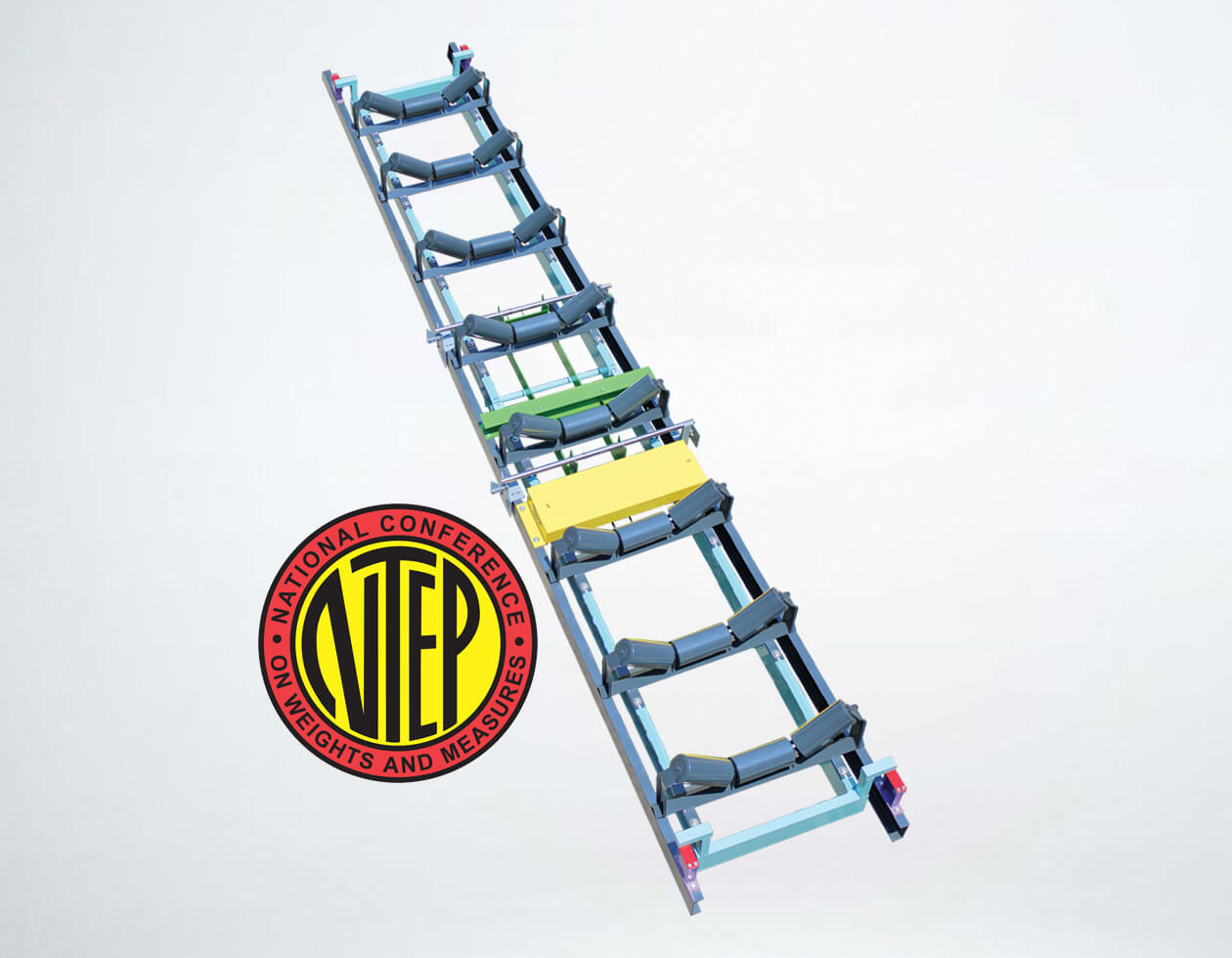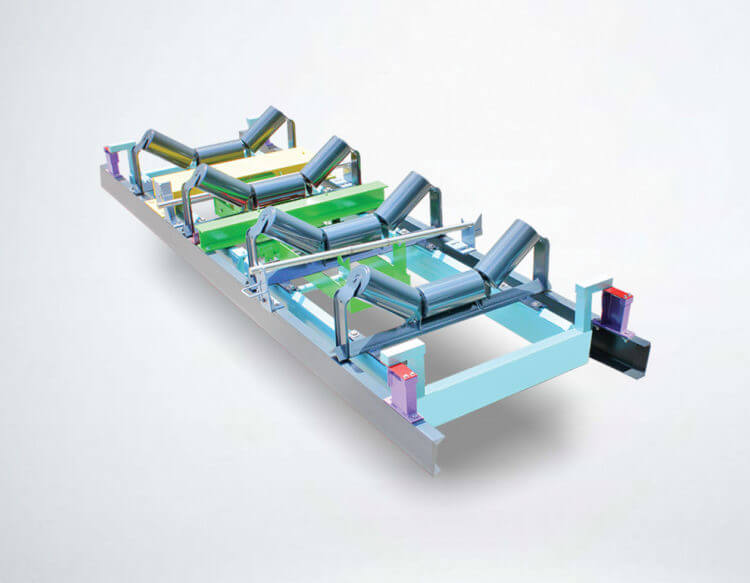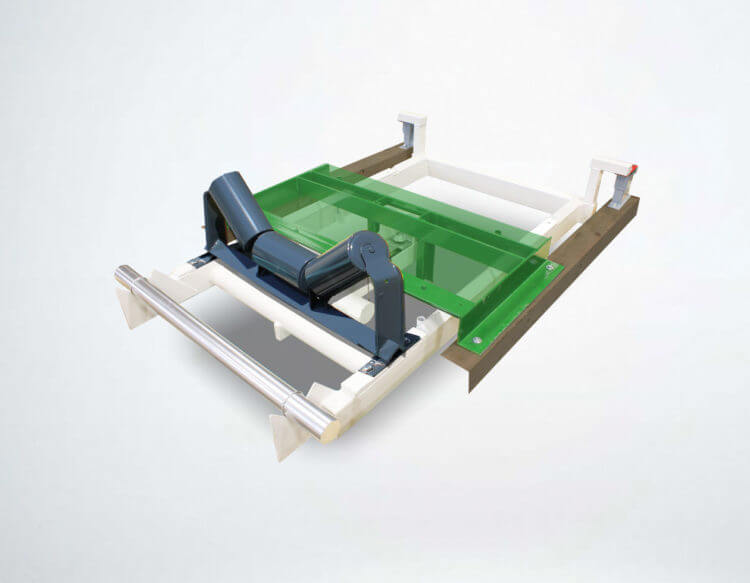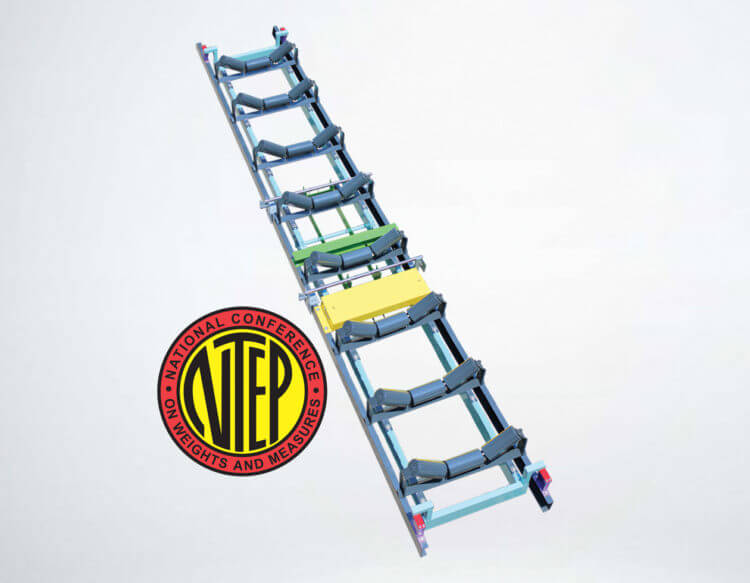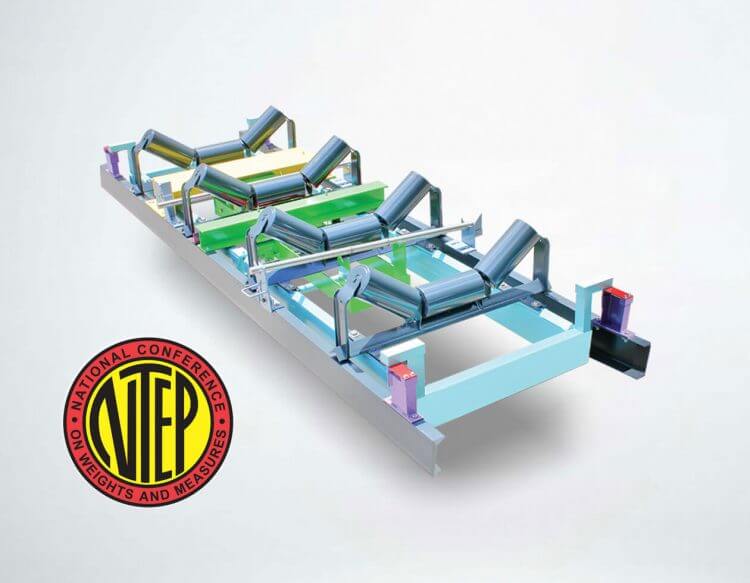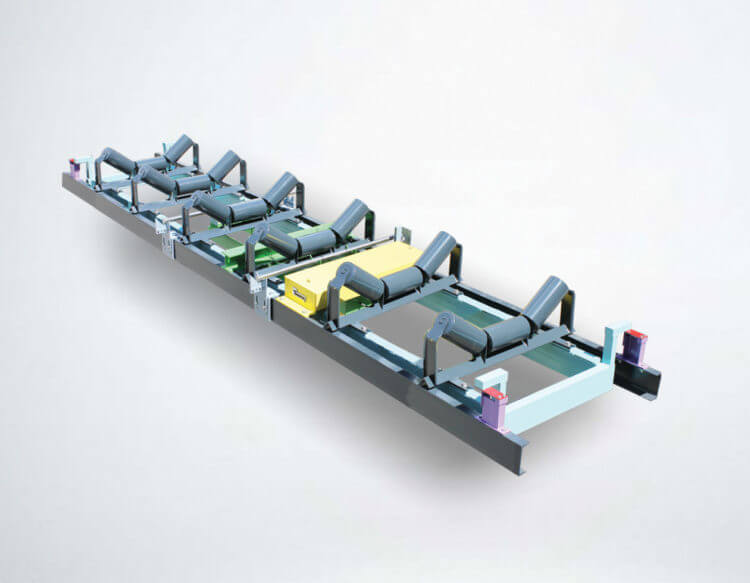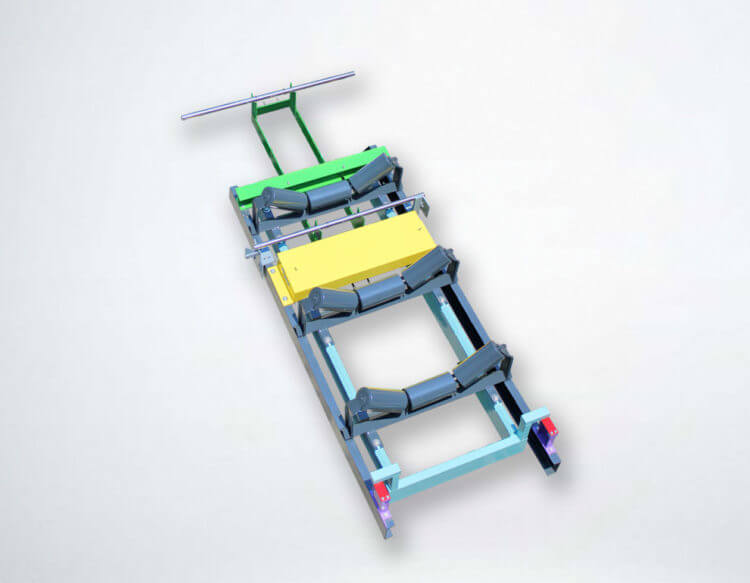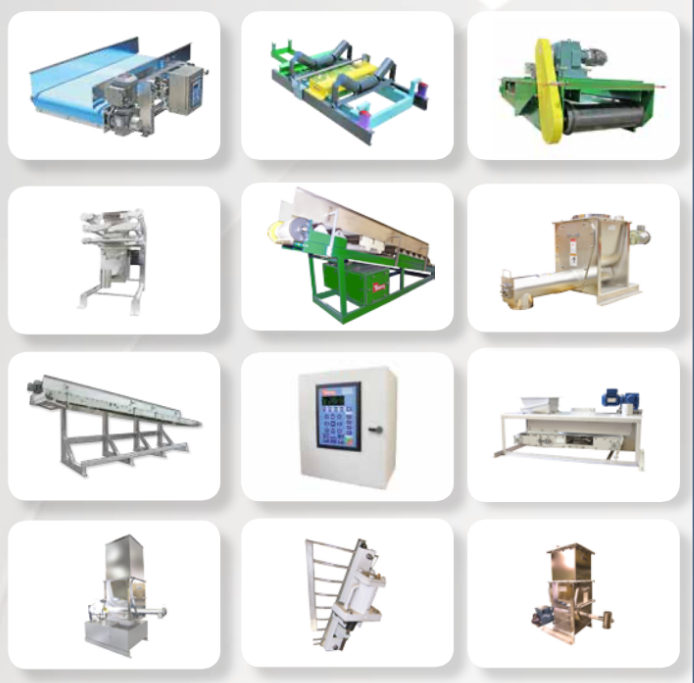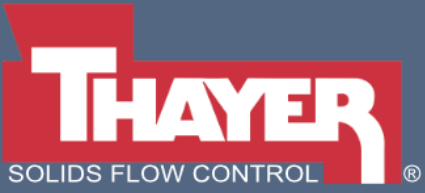Description
8NAR-6 NTEP Certified Conveyor Belt Scale
The THAYER 8NAR-6 Conveyor Belt Scales are designed to deliver exceptional stability and accuracy for use in applications requiring verifiable accuracy. They are recommended for applications requiring commercial certification for billing purposes. These Belt Scales have been proven in service demanding ±0.125% accuracy through independent certification. The weigh bridge features exclusive rocking flexure suspension in the approach-retreat configuration. Measurement sensitivity is high, deflection is low, and the load cell is isolated from the error-inducing effects of extraneous lateral forces, off-center loading, foundation distortion, inclination hold-back forces, and high sporadic shocks and overloads. Tare load is mass counterbalanced to create superior signal to noise ratio in weight sensing, orders of magnitude better than belt scale designs supporting full tare load on the load sensor.
THAYER Load Cell Utilization Factor
The distinct specification of continuous belt scale weighing applications and the unique environment and operational issues those applications typically encounter, places too many requirements on the load sensing system for any single technology to completely satisfy. Therefore, using THAYER’S exclusive FMSS technology in the design of its belt scale suspension system allows the choice of using either its LC‐137 LVDT Load Cell or its LC‐ 174 Strain Gauge Load cell. This puts Thayer in a unique position that allows us to offer equipment to match a wide range of applications such as light material loading, severe environmental conditions, and commercial certification.
WEIGH BRIDGE
One of the most important components of a conveyor scale system is the design of the weigh bridge itself. Regardless of the type of load cell used, a belt scale will not be able to weigh lightly loaded material and maintain its calibration for long if certain design features are not in place.
Secondary Lever
THAYER employs a secondary lever system, even though it cost more to do so, because it permits the following:
1. We can add mass (weight) to counterbalance the dead load (idler support frame, idlers, belts) and by using a secondary lever, we do not load down the suspension pivot.
2. The scale provides for complete mass counter-balancing of the dead load (idlers and belt) of the conveyor permitting the load sensor to react only to the net material load.
3. By positioning the load cell correctly, relative to the secondary lever we can match load cell size to the net loading. Only in this way can any capacity scale be supplied to the same high accuracy standards.
4. The resulting increased lever ratio of the secondary lever reduces idler deflection, providing additional immunity to errors associated with belt tension.
5. The secondary lever system utilizes stainless steel aircraft cables as flexural elements to transmit and FOCUS pure tension forces to the load cell. The cables, being non-extendable, but laterally yieldable connecting links, permit the lever to align itself under conditions of varying stringer distortion. This is a most significant feature. A belt scale must use the conveyor stringers as its mounting base. These stringers not only deflect under varying conveyor loads, but may also rotate (or twist). A suspension system having the least possible structural redundancy is therefore essential.
6. This unique system is not affected by dirt, shocks or vibration, and can withstand overloads in excess of 1,000 pounds without causing damage or affecting calibration.
THAYER’S RF Flexure Suspension
The axis position is permanent, being held in its horizontal position by the flexure plate and in its vertical position by the load rod which bears on the flexure plate, which in turn is bolted to the bottom side of the square and elevated suspension extension shaft.
There is insignificant rotational hysteresis. While the load rod may be likened to a dull knife edge (it is round), the flexure plate bearing surface directly in contact can rock without sliding through small rotational displacement.
The reaction to lateral forces creates an insignificant moment transfer to the weigh suspension (this is part of the patent). Since the flexure plate (which is hardened blue tempered steel) is also the upper bearing block of the pivot, tensile or compressive forces reacting to lateral forces therein have no moment arm distance to operate.
The Model LC-174 NTEP Certified Load Cell is a Strain Gauge “S” Beam Load Cell that is housed in an enclosure that has identical mounting dimensions to that of the LC-137.
Available in force ranges from 25 to 2,000 lbs with an overload protection of 300% of rated output.
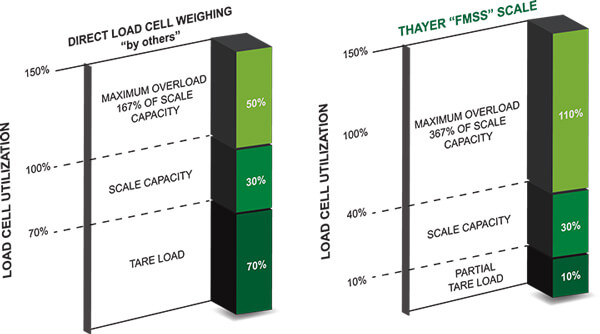
LOAD CELL UTILIZATION FACTOR
The performance of a load cell and its instrumentation is specified on the basis of the load cell’s rated output. If the load cell is supporting a quantity of dead-weight (i.e. idlers, belting, suspension system) and has been further oversized to accommodate problems of overload protection, off-center conveying, shock, vibration and negative integration, then the amount of range left to do the job of weighing is only a fraction of the cell’s rated output. The percentage of the load cell’s rated output reserved for the actual job of weighing material is called the LOAD CELL UTILIZATION FACTOR.
Thayer’s “NAR” Belt Scales with “FMSS” Force Measurement Suspension System mass counter balance technology assures better than 80% Load Cell Utilization.
Provides :
- Field adjustable mechanical TARE balancing of dead loads typically as high as 200 times NET loads, thereby providing the full utilization of the load cell force range
- Reduces deflection of load receptor to a fraction of load cell deflection
- Reduces zero shifting as a result of foundation distortion
- Provides preferred access location of load cell for inspection or removal
- Simplifies the application of test weights for calibration/performance verification

